Two-lined Spittlebug
Jay Davis
September 29, 2023 info
I was fascinated to learn from Charlie that the weird foamy spit one finds on plants in the area is hiding a Spittlebug, aptly named since it excretes foam ”spittle.“ I’ve noticed it frequently, especially in sunny areas along the trail at Cochran Shoals (CRNRA). Here it seems to like brambles – a thorny plant grouping that includes blackberry.
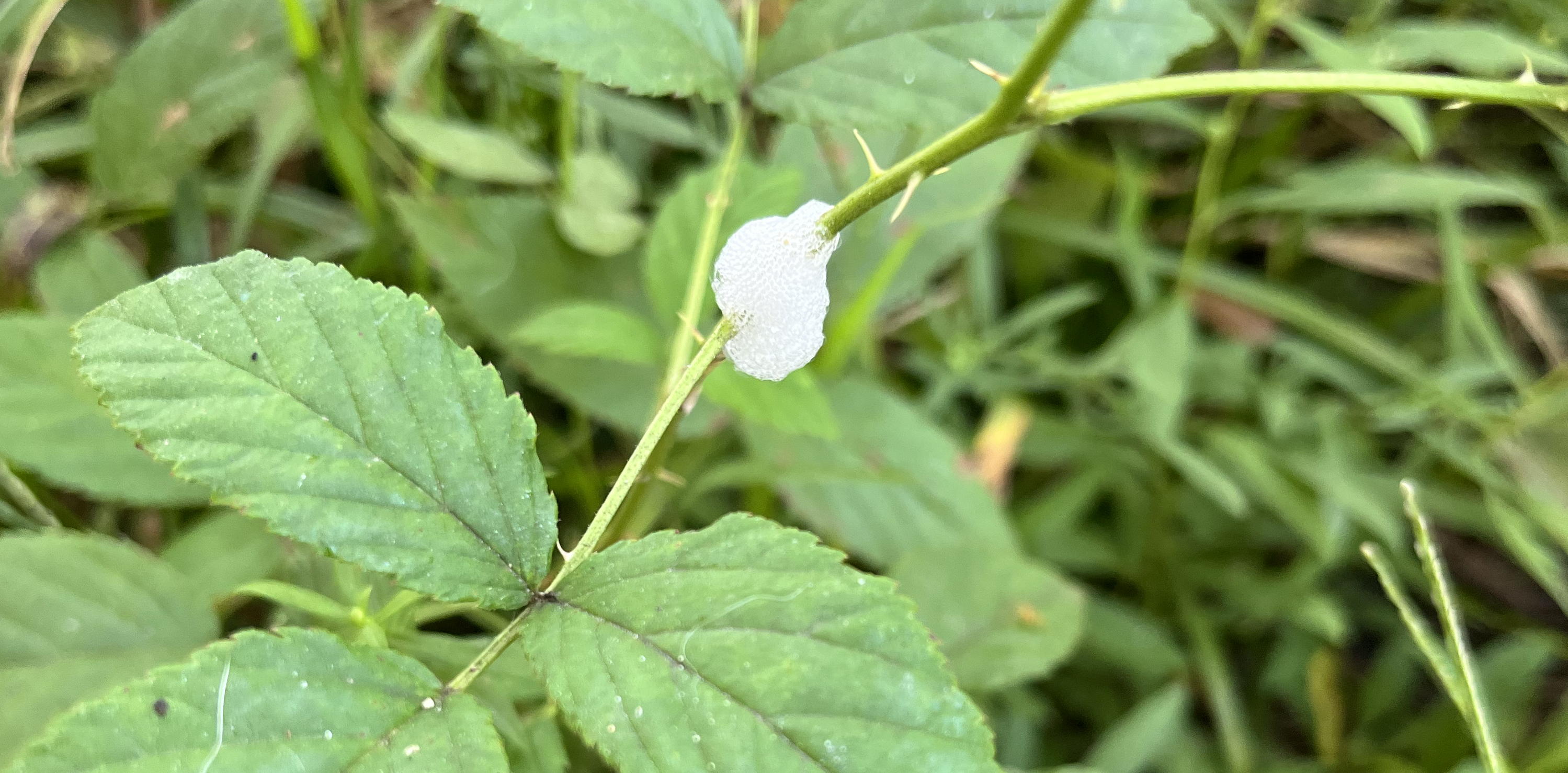
Avid readers of this blog (both of you) may remember these photos of a Two-lined Spittlebug (Prosapia bicincta) taken by Charlie in his back yard (see daily712):
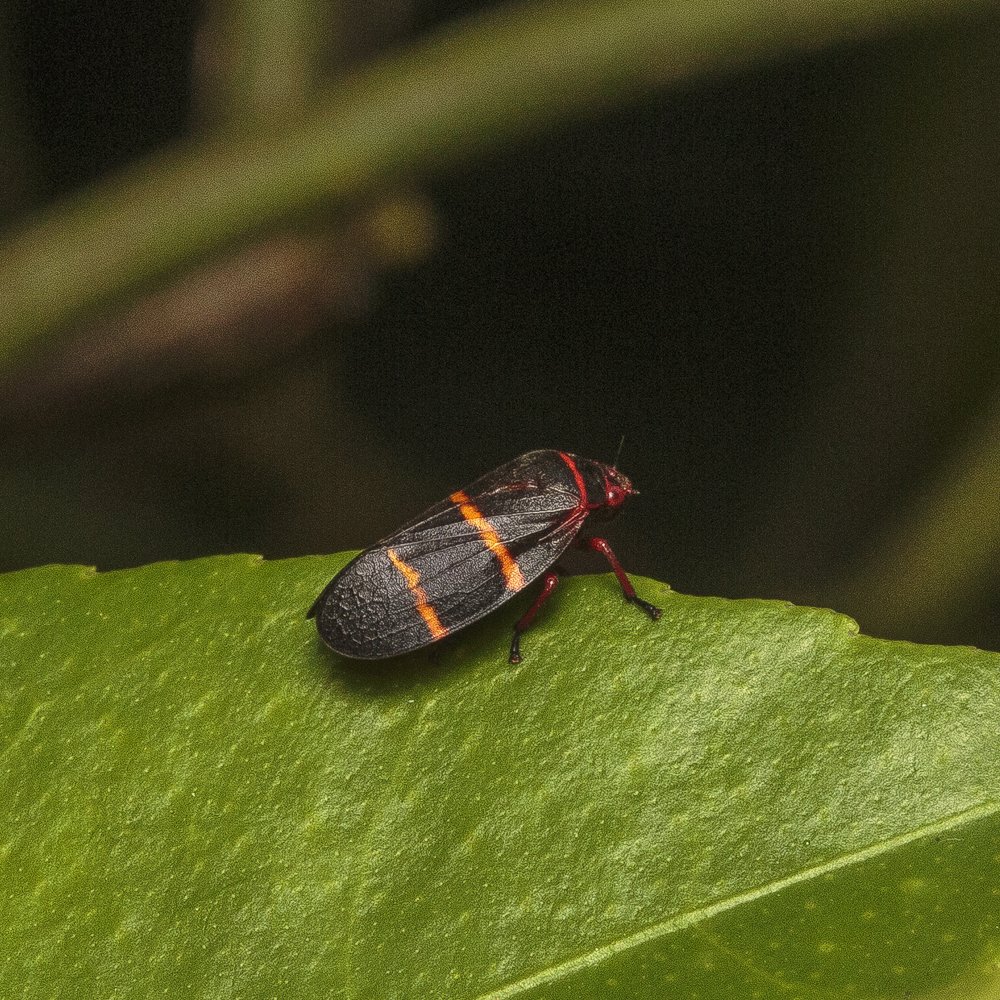
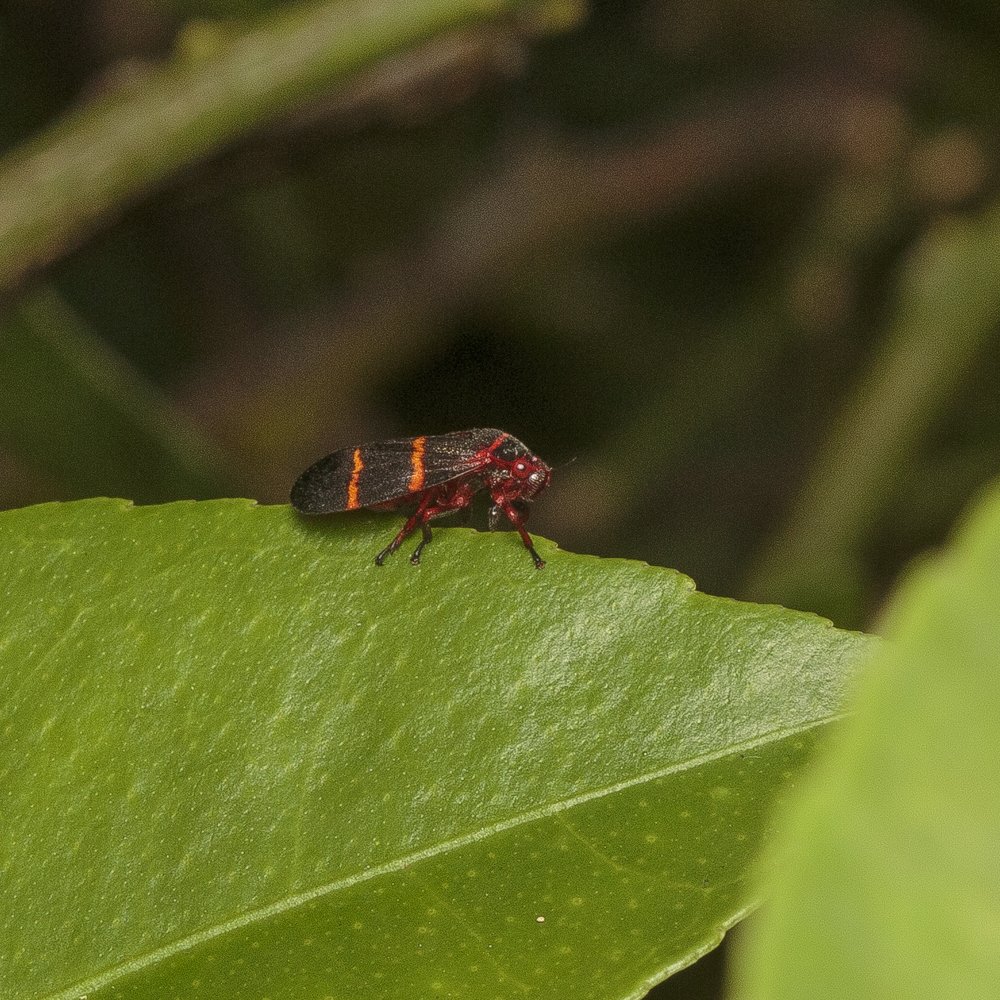
This bug, familiar to me from my childhood, is also called a Froghopper. I remember that they can be induced to jump by touching them gently and they jump a long ways!
I was surprised to learn that this same bug is the source of the spittle that I see regularly. After learning what the spittle was hiding, I found some on a large Arrowhead leaf, where I could easily wipe away its disguise:
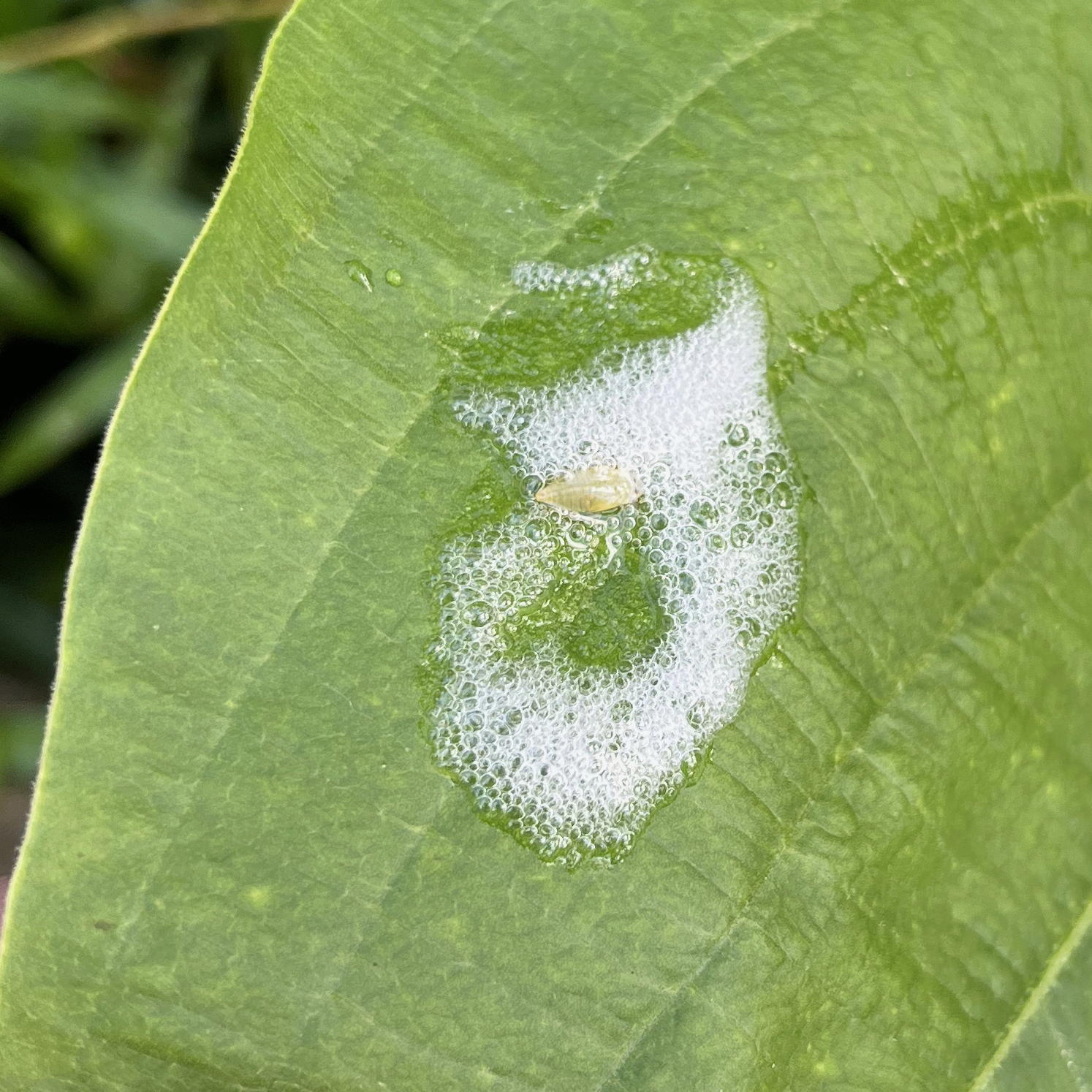
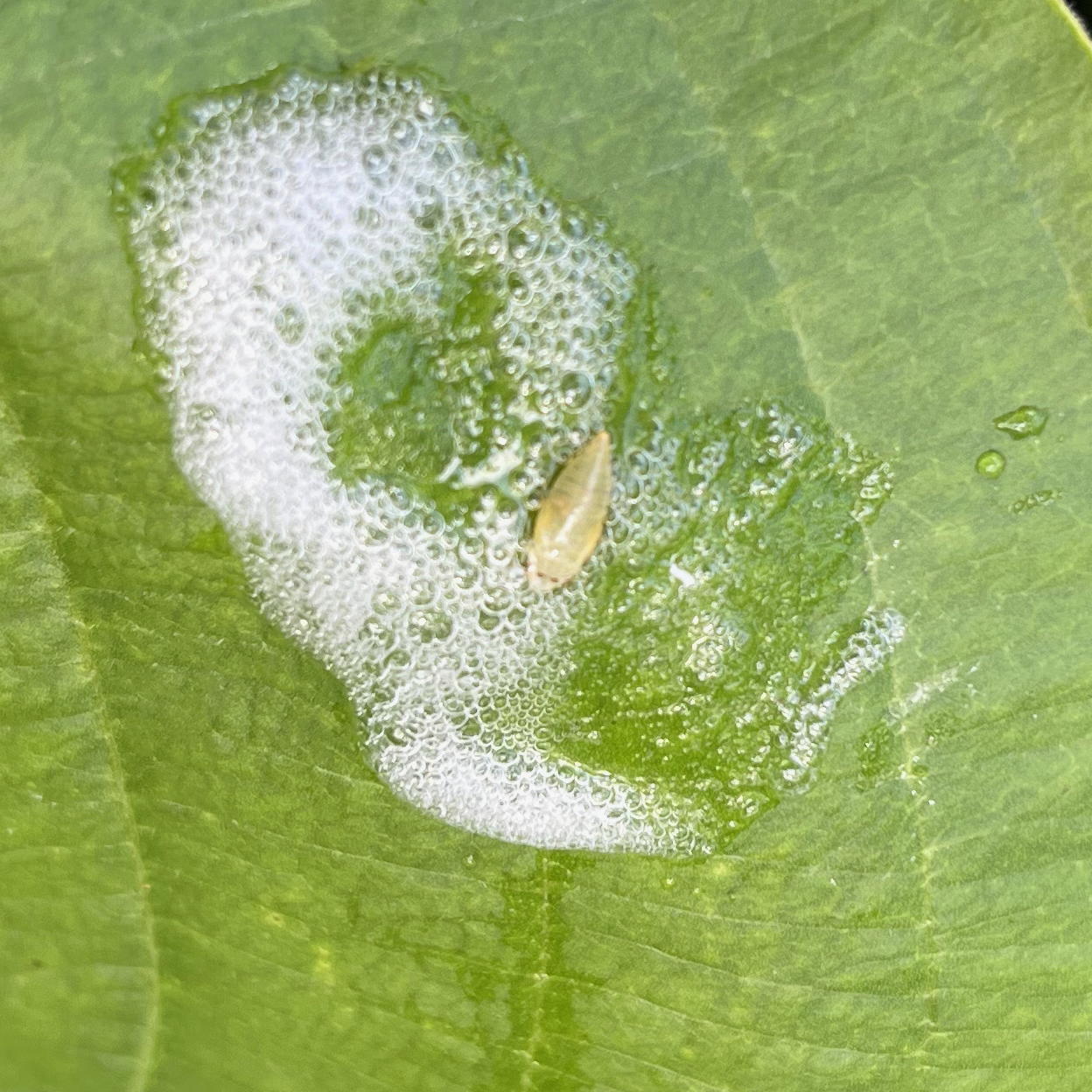
This is an early version ("nymphal instar") of the Spittlebug.
Featured Creatures: Two-lined Spittlebug, an informative web page hosted by the University of Florida’s Institute of Food and Agricultural Sciences, says this about the Spittlebug:
Upon egg hatch, the first instar nymph will find a suitable feeding site ... and produce its signature spittle mass within five minutes of emergence. The spittle mass is a mixture of digested plant sap and air bubbles. The spittle is a result of the large amount of sap ingested by the nymph and the need for excess excretion. The secretions form a bubble mass around the immature insect protecting it from desiccation and helping it avoid predation.*
In further reading I discovered that the spittle is related to the bug’s diet. It feeds from the xylem of the plant, the veins of upflowing liquid which nourish the plant, which is more or less water. It is therefore not very nutritious. So it ingests a lot of this watery material as a result and can expel a lot of the liquid as foam.
Fascinating!
*Quote edited to remove the note that Spittlebugs attach to grass since I see Spittlebugs regularly on bramble bushes and other plants like Arrowhead. (Not to say that they don’t attach to grass of course, just being precise.)